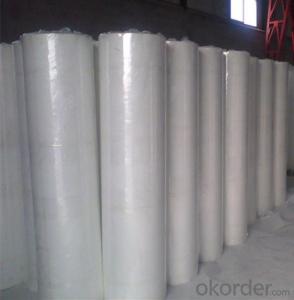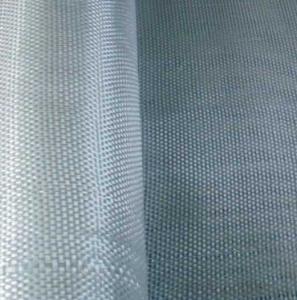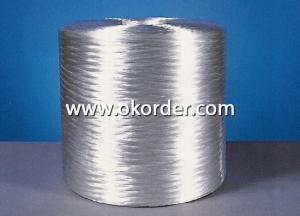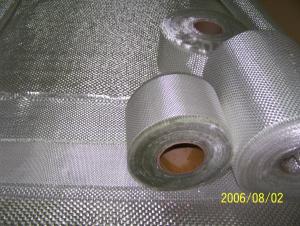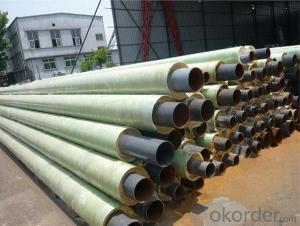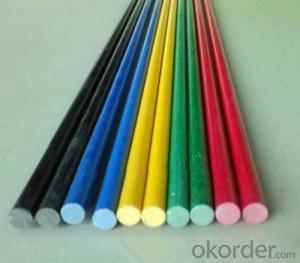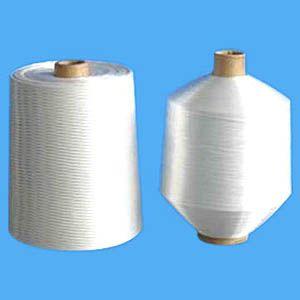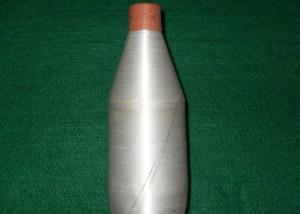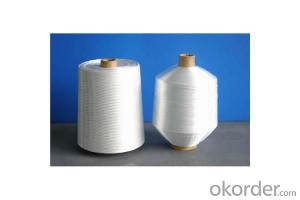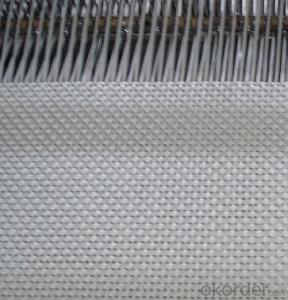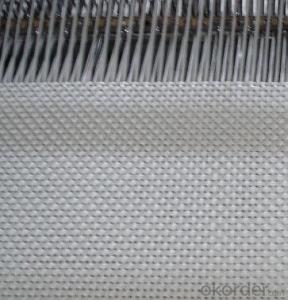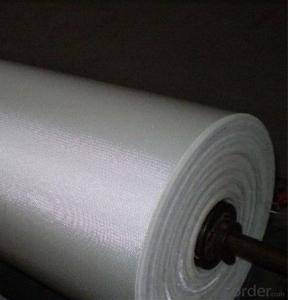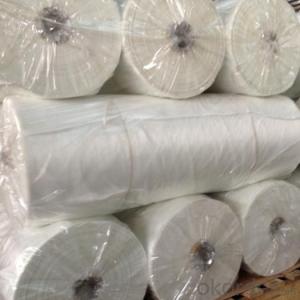Fiberglass Fabric for Corrosion Proofing Field
- Loading Port:
- Shanghai
- Payment Terms:
- TT OR LC
- Min Order Qty:
- 500 m²
- Supply Capability:
- 50000 m²/month
OKorder Service Pledge
OKorder Financial Service
You Might Also Like
Fiberglass Fabric for Corrosion Proofing Field
Fiberglass Fabric Introduction:
Fiberglass fabric is weaved by high quality fiberglass,as a kind of engineering material,which is
many excellent characteristics:
flame-resisting,corrosion resistant,high strength,heat resistance.stable structure,good chemical resistance,durability.
Fiberglass Fabric Features:
Warp and weft yarns are parallel arrangement as flat situation, with uniform tension;
Fiber is aligned with large consistency, stable and easy operation;
Good moldability, fast and complete wet out in resins, resulting in high productivity;
Good transparency and high strength of composite products.
Fiberglass Fabric Specification:
mark | Fiber consistency(ends/ cm) |
Area weight (g/ m2) |
Thick-ness (mm) |
Width (cm) |
Length (mm) | Breaking strength(N)≥ |
weave | |||
Warp direction | Weft direction | Warp direction | Weft direction | |||||||
EW200 | 16 | 12 | 200±20 | 0.2 | 90-130 | 300-1200 | 980 | 980 | ||
EW210 | 16 | 12 | 200±20 | 0.21 | 90-130 | 300-1200 | 1080 | 1080 | Twill weave | |
Plain weave | ||||||||||
EWR360 | 3.2 | 1.8 | 354±18 | 0.35 | 50-300 | 100 | 2000 | 2000 | ||
EW280 | 16 | 10 | 280±28 | 0.26 | 90-130 | 300-1200 | 1800 | 1800 | ||
EW300 | 14 | 10 | 320±32 | 0.3 | 90-130 | 300-1200 | 1500 | 1500 | ||
EW430 | 20 | 12 | 420±42 | 0.43 | 90-130 | 300-1200 | 2000 | 2000 | Broken twill | |
EWR136 | 10 | 10 | 136±13 | 0.136 | 100 | 200 | 850 | 850 |
Plain weave | |
EWR200 | 8 | 7 | 200±20 | 0.21 | 100 | 200 | 1200 | 1200 | ||
EWR400 | 3.6 | 3.2 | 400±30 | 0.4 | 100 | 50-100 | 2500 | 2500 | ||
EWR600 | 2.6 | 2.5 | 600±50 | 0.6 | 100 | 40KG | 4000 | 4000 | ||
EWR580 | 2.5 | 2.3 | 576±29 | 0.58 | 100 | 40KG | 3850 | 3850 | ||
EWR800 | 1.8 | 1.8 | 800±60 | 0.8 | 100 | 40KG | 4600 | 4600 | ||
Product Show
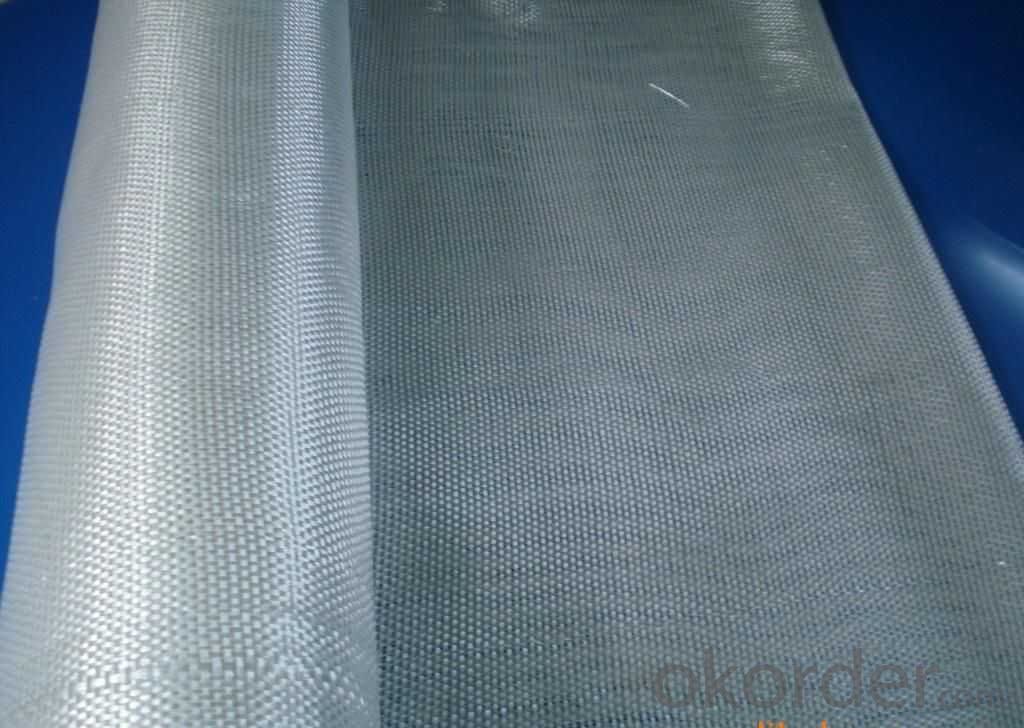
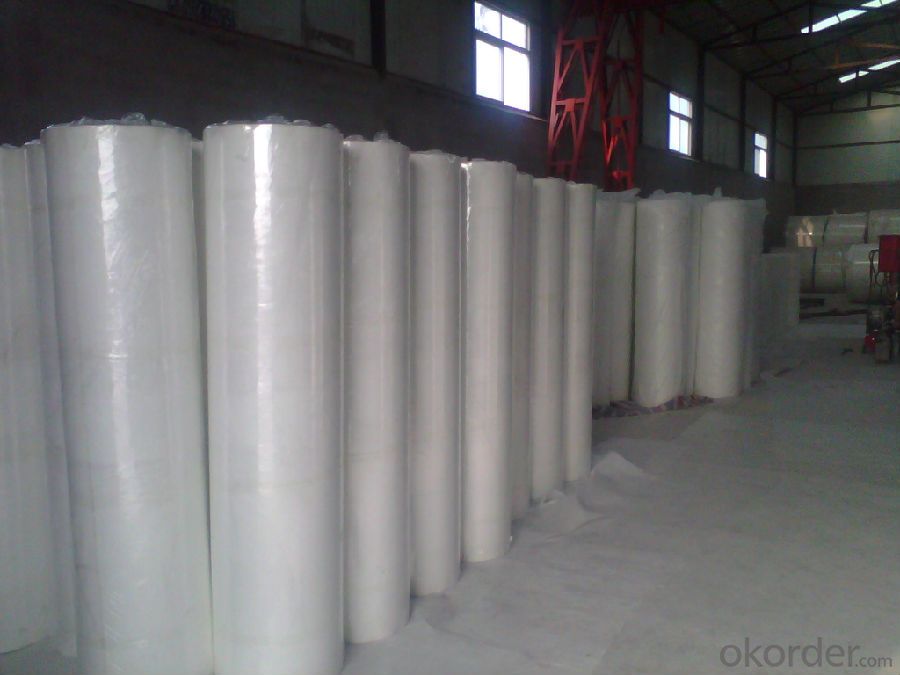
Fiberglass Fabric Usage:
E-glass woven roving is a schistose double faces reinforcement fabric that is weaved into from roving in directly.
E-glass fiber fabric (thin fabrics with thickness from 0.025 to 0.09mm) is suitable for electrical isolation mica product, wax cloth as the reinforcement materials.
E-glass woven roving applys to all kinds of polyester reinforcement system, (such as unsaturated polyester resin, vinylite,epoxy resin and phenolic resin.
E-glass woven roving is a high performance reinforcement material. It is widely used in hand lay-up and machinery processing products, (such as vessel, container, airplane and vehicle component, furniture, athletic facilities and other industry.
FAQ
1.Package of Fiberglass Fabric?
Fiberglass fabric is wound on a paper tube with inner diameters of 50. 8, 76 or 152mm. Each roll is wrapped in a plastic bag, then to be packed in a carton box. The rolls are to be horizontally placed.
Width (cm): 90, 100, 127
Length (m): 100, 200, 300, 400
2.Storage of Fiberglass Fabric?
Store rolls in a cool, dry location
Protect rolls from weather and other damage.
3.If sample available if needed?
We aim to offer our customer best Products&Service,samples are allowed if necessary.
- Q:Is fiberglass yarn resistant to pests or insects?
- Yes, fiberglass yarn is highly resistant to pests and insects. The material is made from spun glass fibers, which do not provide a suitable environment for pests to thrive. Fiberglass yarn is not appealing to insects, as it does not contain any organic matter that they typically feed on. Additionally, the smooth and slippery surface of the fiberglass yarn makes it difficult for pests to crawl or burrow into. Therefore, fiberglass yarn is an excellent choice for applications where pest and insect resistance is desired, such as in the construction of screens, insulation, and textiles.
- Q:Can fiberglass yarn be used for making upholstery cushions?
- Indeed, upholstery cushions can be fashioned using fiberglass yarn. Renowned for its remarkable robustness and endurance, fiberglass yarn proves to be a fitting substance for such cushions. It offers exceptional support and resilience, guaranteeing the maintenance of the cushions' form and composition throughout the passage of time. Furthermore, fiberglass yarn exhibits resistance against moisture, mildew, and insects, rendering it a pragmatic selection for upholstery purposes. Nevertheless, it is crucial to acknowledge that fiberglass yarn can possess an abrasive nature. Consequently, it is commonly employed in conjunction with gentler materials to furnish comfort and avert any potential skin irritation.
- Q:What are the different weights available for fiberglass yarn fabrics?
- There is a wide range of weights available for fiberglass yarn fabrics to meet various applications and requirements. The weights typically span from lightweight to heavy-duty. For lightweight options, fiberglass yarn fabrics can have weights as low as 100 grams per square meter (GSM) or even lower. These fabrics are commonly used in applications that call for delicate or thin fabrics, such as creating lightweight curtains, apparel, or providing lightweight reinforcement in composite materials. In the case of medium-weight fiberglass yarn fabrics, the weights can range from approximately 200 GSM to 400 GSM. These fabrics strike a balance between strength and flexibility, making them suitable for a wide array of applications. They find common use in industries like automotive, aerospace, construction, and marine for purposes like reinforcing composites, insulation, filtration, and creating heat-resistant fabrics. For heavy-duty applications, fiberglass yarn fabrics can surpass 400 GSM in weight. These fabrics are engineered to offer maximum strength, durability, and resistance to extreme conditions. They are frequently employed in industries such as oil and gas, chemical processing, and heavy machinery manufacturing. Heavy-duty fiberglass yarn fabrics are utilized in applications like insulation blankets, fire-resistant barriers, protective clothing, and providing high-strength reinforcement in composite materials. It is important to note that the availability of specific weights can vary depending on manufacturers and suppliers. The weights mentioned above represent general ranges to provide an understanding of the different options available for fiberglass yarn fabrics.
- Q:Can fiberglass yarn be used for high-performance applications?
- Fiberglass yarn possesses exceptional qualities, including strength, durability, and resistance to heat and chemicals, which render it suitable for a wide array of demanding applications requiring high-performance. Notably, the aerospace and automotive industries frequently employ fiberglass yarn to craft robust yet lightweight components. Likewise, the construction sector relies on it to reinforce concrete structures and manufacture high-pressure hoses, electrical insulation, and diverse filter types. Furthermore, fiberglass yarn assumes a pivotal role in producing sports equipment like tennis rackets, hockey sticks, and surfboards, ensuring superior performance and long-lasting durability. In conclusion, fiberglass yarn stands as a versatile material capable of effectively serving various high-performance applications.
- Q:Is fiberglass yarn resistant to compression or crushing?
- Yes, fiberglass yarn is typically resistant to compression or crushing due to its high tensile strength and rigid nature.
- Q:How does the diameter of fiberglass yarn affect its flexibility?
- The diameter of fiberglass yarn directly impacts its flexibility. Generally, a thinner diameter of fiberglass yarn results in increased flexibility, while a thicker diameter reduces flexibility. This is because the thinner yarn allows for more movement and bending, making it more flexible. On the other hand, thicker yarn is more rigid and less likely to bend or flex easily. Therefore, the diameter of fiberglass yarn is a crucial factor in determining its flexibility.
- Q:What are the thermal conductivity properties of fiberglass yarn?
- Fiberglass yarn, commonly used in various industries and applications, possesses excellent thermal conductivity properties. The thermal conductivity of fiberglass yarn refers to its ability to conduct heat. Fiberglass is known for its low thermal conductivity, meaning it is a poor conductor of heat. This property allows fiberglass yarn to effectively insulate against heat transfer, making it an ideal material for applications that require thermal insulation. The low thermal conductivity of fiberglass yarn can be attributed to its composition. Fiberglass is made of fine strands of glass fibers, which are woven together to form yarn. These glass fibers have a low thermal conductivity due to their amorphous structure, meaning they lack a regular, repeating pattern of atoms. This structure prevents the easy transfer of heat through the material. Additionally, the insulation properties of fiberglass yarn can be further enhanced by incorporating other insulating materials or coatings. For example, fiberglass yarn can be coated with a layer of silicone or other insulating materials to improve its resistance to heat transfer. Overall, the thermal conductivity properties of fiberglass yarn make it a versatile and effective material for thermal insulation applications. Its low thermal conductivity helps to minimize heat transfer, making it suitable for use in industries such as construction, automotive, aerospace, and manufacturing, where thermal insulation is crucial.
- Q:Is fiberglass yarn resistant to oils and greases?
- Fiberglass yarn is renowned for its ability to resist oils and greases. Its inherent properties grant it a high level of resistance against the effects caused by these substances. Due to its low affinity for oils and greases, fiberglass yarn does not readily adhere to or allow penetration by these substances. This resistance factor renders fiberglass yarn an excellent choice for applications where contact with oils and greases is anticipated, such as in the production of industrial filters, gaskets, or protective clothing. Furthermore, the durability and longevity of fiberglass yarn are enhanced by its resistance to oils and greases, as it is less susceptible to degradation or weakening when exposed to these substances.
- Q:How does fiberglass yarn affect the breathability of a product?
- The breathability of a product can be influenced by fiberglass yarn in both positive and negative ways, depending on its usage. When fiberglass yarn is employed, it has the potential to enhance the breathability of a product due to its lightweight and porous nature. This enables the easy flow of air as fiberglass yarn is incorporated into a fabric or material, forming a network of minuscule gaps or holes that facilitate air circulation. This trait proves particularly advantageous in insulation materials, where the prevention of moisture buildup and the maintenance of thermal efficiency depend on breathability. However, in certain instances, fiberglass yarn can impede breathability if utilized in a dense or tightly woven manner. If the fiberglass yarn is densely packed and lacks sufficient air permeability, it can hinder breathability. This scenario frequently arises when fiberglass is employed for protective or insulating purposes, prioritizing the creation of a barrier against external elements over the promotion of airflow. It is essential to acknowledge that the breathability of a product is not solely governed by the fiberglass yarn itself but is also influenced by other factors such as overall construction, additional layers or coatings, and the intended purpose of the product. Consequently, the impact of fiberglass yarn on breathability varies depending on the specific application and design choices made by the manufacturer.
- Q:Can fiberglass yarn be used in shipbuilding?
- Fiberglass yarn has the capability to be utilized in shipbuilding. Being both sturdy and lightweight, fiberglass yarn is appropriate for a variety of applications in the marine industry. Its common use in shipbuilding involves reinforcing composite materials like fiberglass-reinforced plastic (FRP) composites. These composites are integral in constructing boat hulls, decks, and other structural components, as they provide enhanced strength and durability. Additionally, fiberglass yarn possesses corrosion resistance, a significant trait for shipbuilding materials. In conclusion, fiberglass yarn is a versatile substance that can effectively contribute to the construction of ships and other marine vessels.
1. Manufacturer Overview |
|
|---|---|
| Location | |
| Year Established | |
| Annual Output Value | |
| Main Markets | |
| Company Certifications | |
2. Manufacturer Certificates |
|
|---|---|
| a) Certification Name | |
| Range | |
| Reference | |
| Validity Period | |
3. Manufacturer Capability |
|
|---|---|
| a)Trade Capacity | |
| Nearest Port | |
| Export Percentage | |
| No.of Employees in Trade Department | |
| Language Spoken: | |
| b)Factory Information | |
| Factory Size: | |
| No. of Production Lines | |
| Contract Manufacturing | |
| Product Price Range | |
Send your message to us
Fiberglass Fabric for Corrosion Proofing Field
- Loading Port:
- Shanghai
- Payment Terms:
- TT OR LC
- Min Order Qty:
- 500 m²
- Supply Capability:
- 50000 m²/month
OKorder Service Pledge
OKorder Financial Service
Similar products
New products
Hot products
Related keywords
